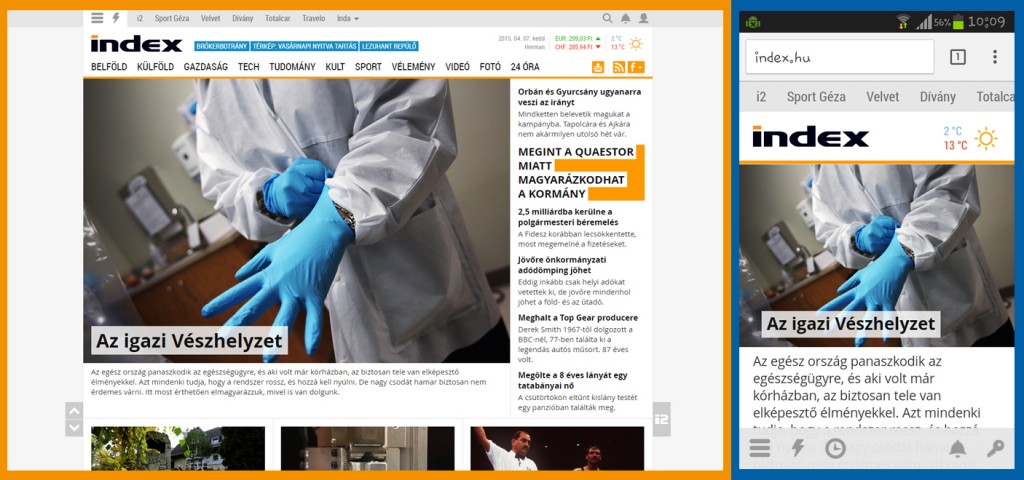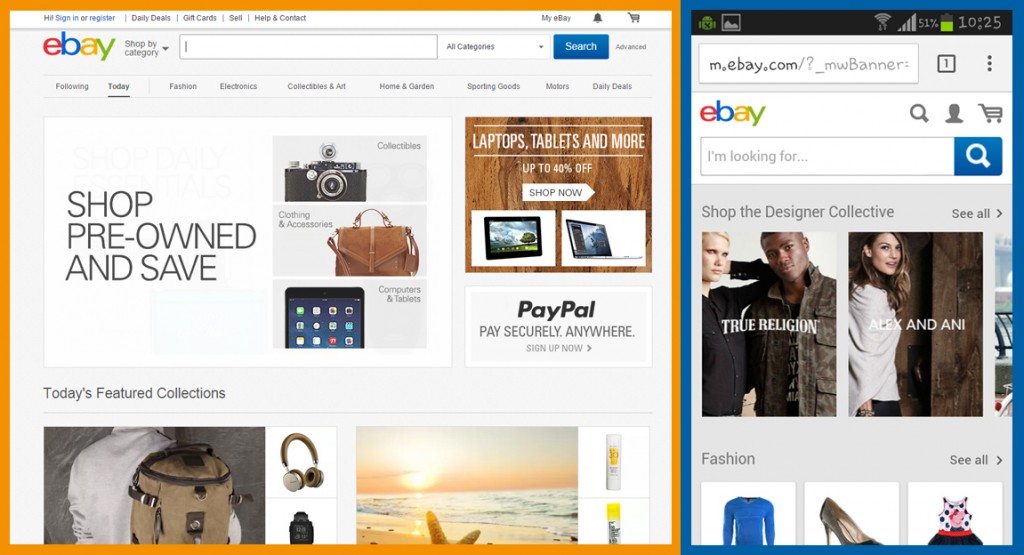About mobile search engine optimisation | Weboptim
The mobile SEO process consists of 4 main steps: research and analysis, development, optimisation and measurement. There are different aspects and criteria to consider to find the best solution for you, depending on your audience, content, capacity and type of business.
The key questions may include:
Is it necessary to use 'm' subdomain for the mobile site? What is the advantage?
Not necessary, but easier in terms of URL structure. Short, user-friendly, easier to set up links to the desktop version, easier to track traffic with subdomain filtering.
If multiple URLs are used to display the same content but in different formats, Google's search algorithms will get a signal that the 2 pages are equivalent in content and should be treated together. If they are treated separately, both the normal and mobile URLs will show up in desktop searches and rankings may be weaker as a result.
How to integrate your app into your mobile SEO strategy? When someone arrives on the landing page, can we use pop-ups to encourage them to use the app instead?
It is not recommended to use pop-ups, as they can block search bots. A relevant and non-intrusive solution is to recommend users to use the application at the top or bottom of the page.
If the mobile site uses a separate URL, do we need a separate Google Analytics tracking code for the mobile version?
We can use the existing GA code, but we need to modify it to show the full host name and create a separate view for the Mobile subdomain.
Mobile search engine optimisation
Why is mobile search important?
The number of mobile searches has increased almost fivefold in the last 2 years. Most people are using their mobile phones to search for electronics, restaurants and movies.

Why do we need mobile optimisation?
A mobile optimised website is now almost indispensable. All websites that are relevant to something have a mobile version where users can see information according to their screen resolution. A large percentage of people may turn back because of a poor user experience.
What questions are we looking to answer in the optimisation process?
1. Learn from our current mobile visitors!
- What is the current mobile traffic? Conversions, volumes, trends? - In Google Analytics, we look at the mobile users of our website, how they behave, what subpages they visit, etc. By default, we have a segment called mobile and tablet traffic, we use them.
- How do the conversion rates compare between mobile and desktop organic searches?
- What tools do visitors use?
- What are the organic mobile keywords and landing pages?
- How do these compare to organic search visitors?
2. Check the current user experience!
- How will our site be displayed on a mobile device?
- How is the content visible and usable?
3. Monitor the behaviour of mobile users!
- What are the sources and sites of the current mobile site?
- How effective are they compared to our desktop site?
- Can Google map our website?
- Are you mapping it properly?
- How do pages appear in mobile and tablet search results?
- How strong are the mobile ranked sites?
- How is this strength compared to mobile competitors?
4. Examine the mobile audience!
- What are the organic keyword rankings used by mobile audiences?
- What is the organic search potential of the site?
- What is the earning power of the relevant keywords?
- Can we identify more relevant keywords by looking at competitors?
5. Choose the best mobile website design!
- What are the options?
- Which best fits the situation?
6. General Mobile SEO advice
- How to optimise mobile website speed?
- Why is speed important?
- What are Google's recommendations on this?
- How can we optimise the content?
- What are the building blocks that need to be optimised?
- If we are a local business, how do we increase our visibility?
- What aspects should we consider when optimising the mobile interface?
7. Mobile SEO responsive web design via
- What is responsive web design? - The layout of the page is automatically adjusted to the screen resolution of the device the user is using. There is one website, no separate desktop and mobile versions. Same URL and content. You should choose this if you have the right tech background and the mobile and desktop content and keywords are very similar.
- How do we know if a site is responsive?
- What are Google's suggestions for responsive, smartphone-optimised sites?
- What are the pros and cons of responsive design for mobile SEO?
- In what situations should you use our mobile site?
- How can we implement it easily?
- How important is speed?
- Why should Javascript and CSS files not be blocked?
Responsive website display on desktop and mobile devices:

8. Mobile SEO dynamic servicesal
- What is dynamic serving? - The web server responds with different HTML files at the same URL depending on the device from which the information is requested: mobile or desktop. The URL is the same, but the content displayed is different. Choose it if you want to show mobile users different content or if responsive web design is not feasible for technical reasons.
- How do we know if content is like this?
- What are the advantages and disadvantages of dynamic serving for mobile SEO?
- In what situations should you use our mobile site?
Dynamic website display on desktop and mobile devices:

9. Mobile SEO parallel mobile website using
- What is a parallel mobile site? - EWe create a special mobile structure with separate URLs for a subdomain 'm.' for mobile users. If necessary, redirecting them to the correct page version. The URL is different, the content is the same. We use it when, for technical reasons, we cannot use the mobile version of the dynamic service.
- How do we know if a website uses one?
- What are the pros and cons of a parallel mobile site for mobile SEO?
- In what situations should you use our mobile site?
- How to structure your pages?
- How can we implement it easily?
- Do we let users move between desktop and mobile?
- How can we follow their activities?
Parallel mobile website on desktop and mobile devices:

10. Measurement and development
- What indicators should we watch for in mobile traffic?
- How to decide if mobile search optimisation is successful or not?
- Is the ROI of mobile organic search positive?
- When is the time to make a mobile app?
- Are you seeing higher traffic and conversion rates from a specific mobile platform?
If we can review the list, we can see that there are many more aspects to incorporate into the design and optimisation process than we might think.
Source: moz.com